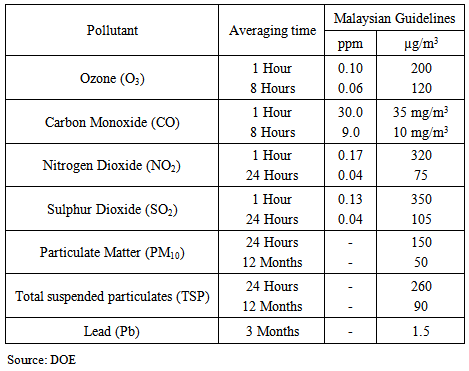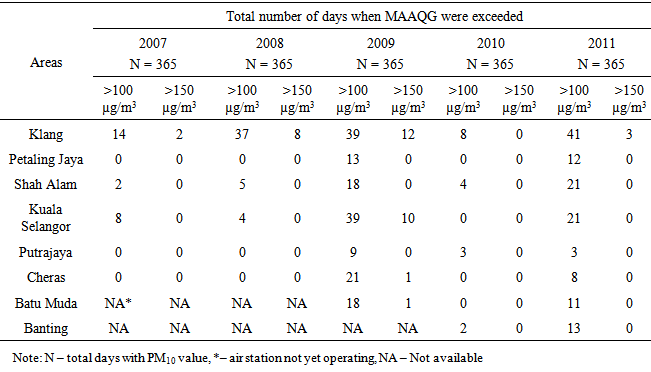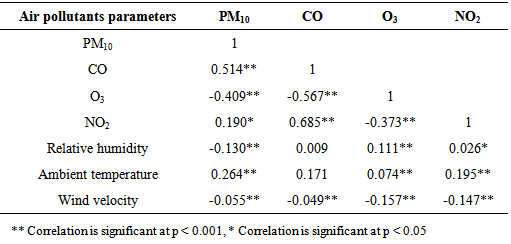| [1] | Department of Statistics Malaysia, 2011, Economic Census 2011, Malaysia: Department of Statistics. |
| [2] | Ling, O.H.L., Ting, K.H., Shaharuddin, A., Kadaruddin, A., Yaakob, M.J., (2010). Urban growth and air quality in Kuala Lumpur city, Malaysia. Environ Asia 3(2): 123-8. |
| [3] | Ling, O. H., Ting, K. H., Shaharuddin, A., Kadaruddin, A., & Yaakob, M. J., 2012, Urban Air Environmental Helath Indicators for Kuala Lumpur City, Sains Malays, 41, 179-191. |
| [4] | Azmi, S. Z., Latif, M. T., Ismail, A. S., & Juneng, L., 2010, Trend and status of air quality at three different monitoring stations in the Klang Valley, Malaysia. Air Quality Atmosphere and Health, 3, 53-64. |
| [5] | Awang, M.B., Jaafar, A.B., Abdullah A.M., et al., 2000. Air quality in Malaysia: impacts, management issues and future challenges. Respirology 2000; 5: 183-96. |
| [6] | Department of Environment Malaysia, 2012. Malaysia Environmental Quality Report, 2011. Ministry of Science, Technology and Environment, Kuala Lumpur. |
| [7] | Jalaludin, B. B., O'Toole, B. I., Leeder, S. R., 2004, Acute effects of urban ambient air pollution on respiratory symptoms, asthma medication use, and doctor visits for astma in a cohort of Australian children, Environmental Research, 95, 32-42. |
| [8] | Ling, O.H.L., Shaharuddin, A., Kadaruddin, A., Yaakob, M.J., 2011. Urban air environmental health indicators: A preliminary set for city of Kuala Lumpur. Planning Malaysia 9: 77-96. |
| [9] | Ministry of Science and Technology and Innovation (MOSTI). (1 January, 2013). General Climate of Malaysia. Retrieved 31 December, 2013, from Ministry of Science, Technology, and Innovation:http://www.met.gov.my/index.php?option=com_content&task=view&id=75&Itemid=1089&limit=1&limitstart=0. |
| [10] | Zakaria, J., Lye, M. S., Hashim, J. H., & Hashim, Z., 2010, Allergy to Air Pollution and Frequency of Asthmatic Attacks among Asthmatic Primary School Children. American-Eurasian Journal Toxicological Science, 2, 83-92. |
| [11] | Sahani, M., Jalaludin, B, Mohamaed, A., Ambu, S., 2001. Particulate air pollution (haze) due to the 1997 forest fires and effect on deaths in Malaysia. International Medical Journal 5 (2), 75e85. |
| [12] | Afroz, R., Hassan, M. N., & Ibrahim, N. A., 2003, Review of air pollution and health impacts in Malaysia, Environmental Research, 92, 71-77. |
| [13] | Abdullah, A. M., Samah, M. A., & Jun, T. Y., 2012, An Overview of the Air Pollution Trend in Klang Valley, Malaysia. Open Environmental Sciences, 6, 13-19. |
| [14] | Shaadan, N., Deni, S. M., & Jemain, A. A., 2012, Comparing the severity of PM10 using functional descriptive statistics: A case study in Klang Valley,Journal of Statistical Model Analysis, 3, 1-10. |
| [15] | MdYusof, N. F., Ramli, N. A., Yahaya, A. S., Sansuddin, N., Ghazali, N. A., & al Madhoun, W., 2009, Monsoonal differences and probability distribution of PM10 concentration. Environmental Monitoring Assessment, 163, 655-667. |
| [16] | Ishii, S., Bell, J. N. B., & Marshall, F. M., 2007, Phytotoxic risk assessment of ambient airpollution on agricultural crops in Selangor State, Malaysia. Environmental Pollution, 150, 267-279. |
| [17] | Dominick, D., Juahir, H., Latif, M. T. C., Zain, S. M., &Aris, A. Z., 2012, Spatial assessment of air quality patterns in Malaysia using multivariate analysis, Atmospheric Environment, 60. |
| [18] | Jamal, H. H., Pillay, M. S., Zailina, H., Shamsul, B. S., Sinha, K., Zaman Huri, Z., Khew, S.L., Mazrura, S., Ambu, S., Rahimah, A., & Ruzita, M.S., 2004, A Study of Health Impact & Risk Assessment of Urban Air Pollution in Klang Valley, UKM Pakarunding Sdn Bhd, Malaysia, Kuala Lumpur. |
| [19] | Ding, Y., & J. Chan., 2005, The East Asian summer monsoon: An overview. Meteorology and Atmospheric Physics, 89, 117–142. |
| [20] | Zhao, C., Wang, Y., Yang, Q., Fu, R., Cunnold, D., & Choi, Y., 2010, Impact of East Asian summer monsoon on the airquality over China: View from space. Journal of Geophysical Research, 115. |
| [21] | Malaysian Meteorological Department(MMD), 2013, Monsoon, Retrieved 31 August, 2013, from Official Portal Malaysian Meteorological Department:http://www.met.gov.my/index.php?option=com_content&task=view&id=69&Itemid=160 |
| [22] | Syazwani, Z., 2010, Application of GIS in Air Quality Monitoring of a Road Construction Project. Malaysia: Universiti Teknologi Malaysia. |
| [23] | Barmpadimos, I., Hueglin, C., Keller, J., Henne, S., & Prevot, A. S., 2011, Influence of meteorology on PM10 trends and variability in Switzerland from 1991 to 2008, Atmospheric Chemistry and Physic, 11, 1813-1835 |
| [24] | Rostam, K., 2006, Migration to Klang Valley Metropolitan Peripheral Areas. Akademika, 68, 3-27. |
| [25] | Department of Statistics Malaysia, 2009. Basic Population Characteristics by Administrative Districts 2009 Report. |
| [26] | Ahamad, F., Latif M. T., Dominick, D., & Tang, R., 2012, Daily Maximum Ozone Variability at Selected Urban and Semi-Urban Areas in Peninsular Malaysia. UMT 11th International Annual Symposium on Sustainability Science and Management. Terengganu, Malaysia. |
| [27] | Department of Environment (DOE)., 2011, Malaysia Environmental Quality Report 2011. Malaysia: Department of Environment. |
| [28] | Department of Environment Malaysia (DOE), 1997. A Guide to Air Pollutant in Malaysia, (API). Ministry of Science, Technology and Environment, Kuala Lumpur. |
| [29] | Department of Environment Malaysia, 2013. Malaysia Environmental Quality Report, 2012. Ministry of Science, Technology and Environment, Kuala Lumpur. |
| [30] | Guilford, J.P., Fruchter, B., 1973. Fundamental statistics in psychology and education. Tokyo: McGraw-Hill Kogakusha, LTD. |
| [31] | Jolliffe, I.T., 2005, Principal Component Analysis in Encyclopedia statistics in behavioural science. John Wiley & Sons, Ltd. DOI: 10.1002/0470013192.bsa501. |
| [32] | Jolliffe, I.T., 2002, Principal Component Analysis, second ed. Springer-Verlag, New York. |
| [33] | Beaumont, R., 2012, An introduction to Principal Component Analysis & Factor Analysis Using SPSS 19 and R (psych package). |
| [34] | Jolliffe, I.T., 1986, Principal Component Analysis. Springer, New York |
| [35] | Liu, C.W., Lin, K.H., Kuo, Y.M., 2003. Application of factor analysis in the assessment of groundwater quality in a Blackfoot disease area in Taiwan. Science of the Total Environment 313, 77e89. |
| [36] | Lu, G. Y. and Wong, D. W., 2008. An adaptive inverse-distance weighting spatial interpolation technique. Computers & Geosciences34: 1044-1055. |
| [37] | Shah, R. N., Abdullah, J., & Ahmad, Z., 2010, The Physical Development of Port City, Malaysian Universities Transportation Research Forum and Conference 2010 (pp. 269-278), Putrajaya: Universiti Tenaga Nasional. |
| [38] | Department of Environment (DOE), 2010, Malaysia Environmental Quality Report 2010, Malaysia: Department of Environment. |
| [39] | Department of Statistic Malaysia, 2010,Population Distribution and Basic Demographic Characteristics 2010. Malaysia: Department of Statistics |
| [40] | United States Environmental Protection Agency, 2010. Methane and Nitrous Oxide Emissions from Natural Sources. U.S. Environmental Protection Agency, Washington, DC,USA.http://webcache.googleusercontent.com/search?q=cache:FNds6m5eAIwJ:epa.gov/climatechange/ghgemissions/gases/n2o.html+&cd=1&hl=en&ct=clnk. |
| [41] | Rajab, J. M., Tan, K. C., & Jafri, M. Z., 2011, Investigation on the Carbon Monoxide Pollution over Peninsular Malaysia Caused by Indonesia Forest Fires from AIRS Daily Measurement, In F. Nejadkoorki, Advanced Air Pollution (pp. 115-136). InTech. |
| [42] | Mahmud, M., 2005, Active Fire and Hotspot Emissions in Peninsular Malaysia during 2002 Burning Season, Malaysian Journal of Society and Space, 1, 32-45. |
| [43] | Chelani, A. B., 2013, Study of Extreme CO, NO2 and O3 Concentrations at a Traffic Site in Delhi: Statistical Persistence Analysis and Source Identification, Aerosol Air Quality Research, 13, 377-384. |
| [44] | Tey, N. P., 2012, Internal Migration in the Klang Valley of Malaysia: Issues and Implications,Malaysian Journal of China Studies, 1, 40-59. |
| [45] | Department of Environment (DOE), 2009, Malaysia Environmental Quality Report 2009, Malaysia: Department of Environment. |
| [46] | Amanollahi, J., Abdullah, A. M., Pirasteh, S., Ramli, & M. F., Rashidi, P., 2011, PM10 monitoring using MODIS AOT and GIS, Kuala Lumpur, Malaysia, Research Journal of Chemistry and Environment, 15, 1-5. |
| [47] | Chin, M., 2012, Atmospheric science: Dirtier air from a weaker monsoon, Nature Geoscience, 5, 449-450. |
| [48] | Department of Environment (DOE), 2008, Malaysia Environmental Quality Report 2008, Malaysia: Department of Environment. |
| [49] | Mansouri, B., Hoshyari, E., & Mansouri, A., 2011, Study on ambient concentrations of air quality parameters (O3, SO2, CO and PM10) in different months in Shiraz city, Iranian International Journal of Environmental Science, 1, 1440-1447. |
| [50] | Varadarajan, C., 2004. Explore the Link of PM10 with Meteorological Factors and Ambient Air Concentrations of Ozone, CO and NO2 using Time Series for Cleveland, Ohio. Doctoral dissertation, University of Toledo. |
| [51] | Atkinson, R. W., Yu, D. H., Armstrong, B. G., Pattenden, S., Wilkinson, P., Doherty, R. M., Heal, M. R., & Anderson, H. R., 2012, Concentration–Response Function for Ozone and Daily Mortality: Results from Five Urban and Five Rural U.K. Populations, Environmental Health Perspective, 120, 1411-1417. |
| [52] | Zhang, L. E., 2006, Ozone-CO correlations determined by the TES satellite instrument in continental outflow regions. Geophysical Research Letters, 33. |
| [53] | Han, S., Bian, H., Feng, Y., Liu, A., Li, X., Zeng, F., & Zhang, X., 2011, Analysis of the Relationship between O3, NO and NO2 in Tianjin, China, Aerosol Air Quality Research, 11, 128-139. |
| [54] | Saini, R., Satsangi, G. S., & Taneja, A., 2008, Concentrations of Surface O3, NO2, NO during winter seasons at a semi-arid region - Agra, India, Indian Journal of Radio and Space Physics, 121-130. |
| [55] | Mao, H., & Talbot, R., 2004, O3 and CO in New England: Temporal variations and relationships,Journal of Geophysical Research, 109, 21304. |
| [56] | Real, E. E., 2008, Lagrangian analysis of low altitude anthropogenic plume processing across the Nort Athlantic. Atmospheric Chemistry and Physics, 8, 7737-7754. |
| [57] | Ayres, R. U., & Ayres, E. H., 2009, Crossing the Energy Divide: Moving from Fossil Fuel Dependence to a Clear-Energy Future, Wharton School Publishing. |
| [58] | Hare, S., Cresswell, L., Twigg, R., & Buchdal, J., 2002, Air Pollution. 2002: Atmosphere, Climate and Environment Information Programme. |
| [59] | Verma, S. S, & Desa, B., 2008, Effect of Meteorological Conditions on Air Pollutions of Surat City,Journal of International Environmental Application Science, 3, 358-367. |
| [60] | Schlenker, W., & Walker, W. R., 2012, Airports, Air Pollution, and Contemporaneus Health. Robert Wood Johnsoon Foundation. |



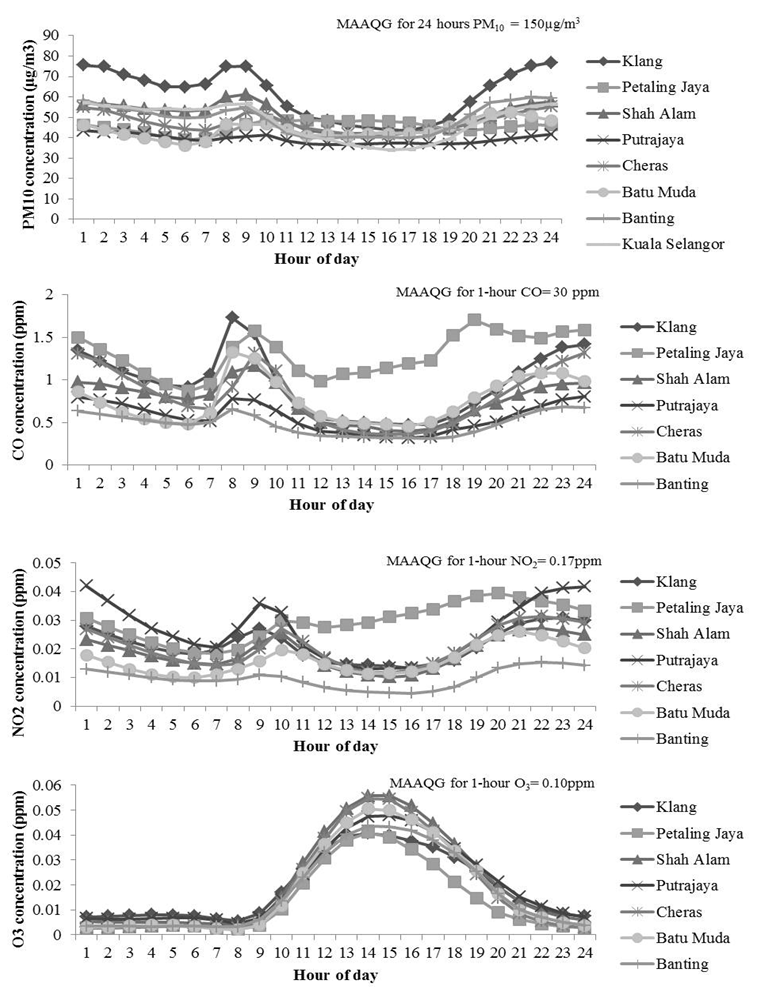
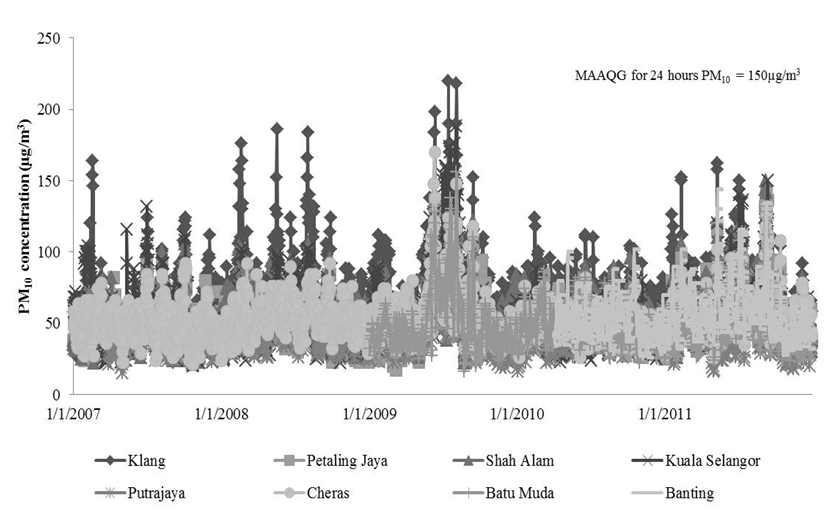
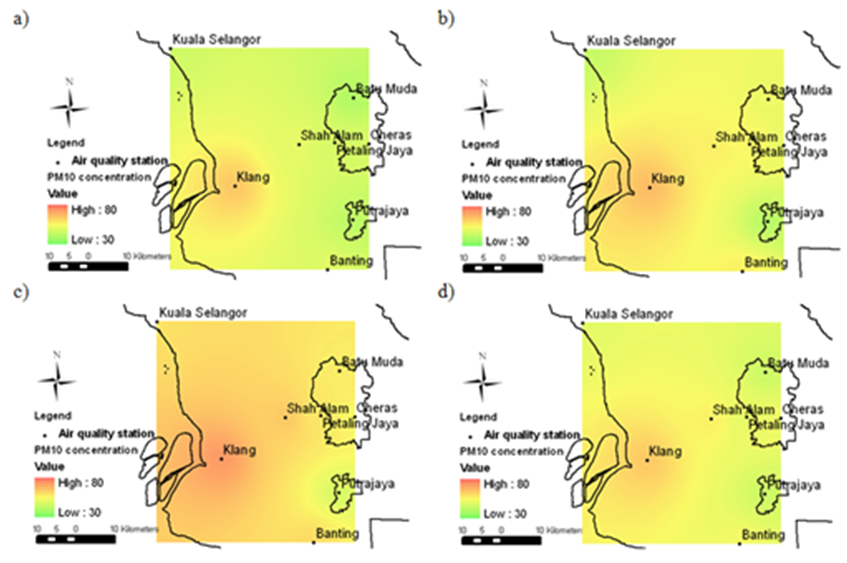
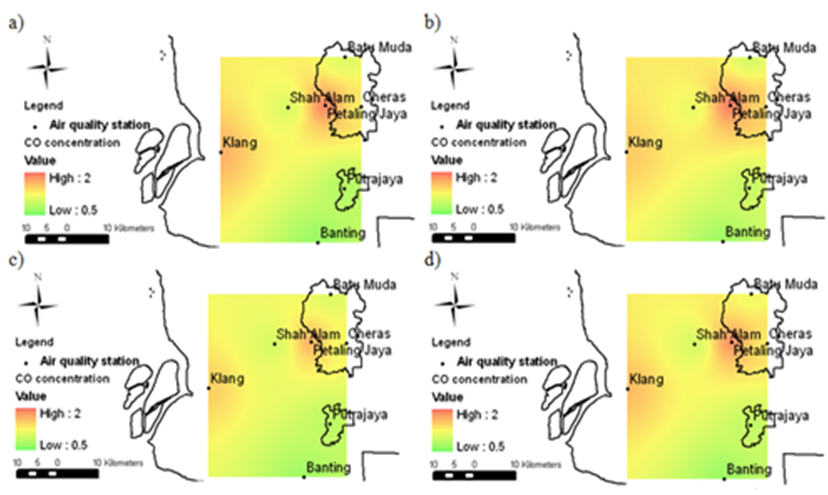
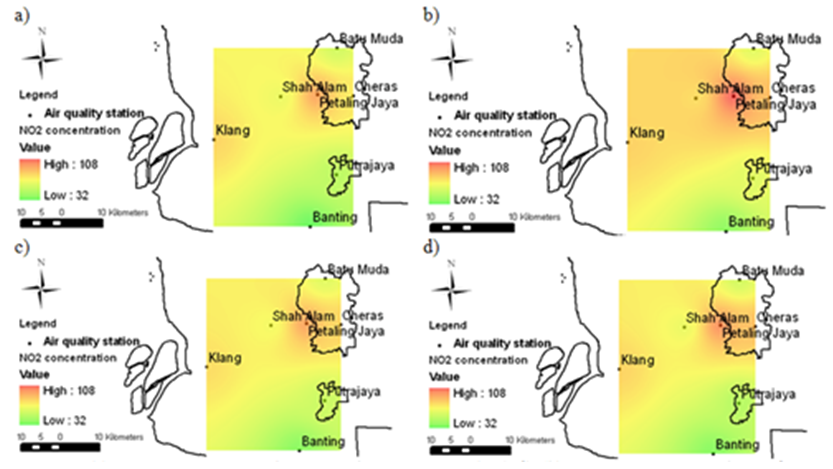

 Abstract
Abstract Reference
Reference Full-Text PDF
Full-Text PDF Full-text HTML
Full-text HTML
